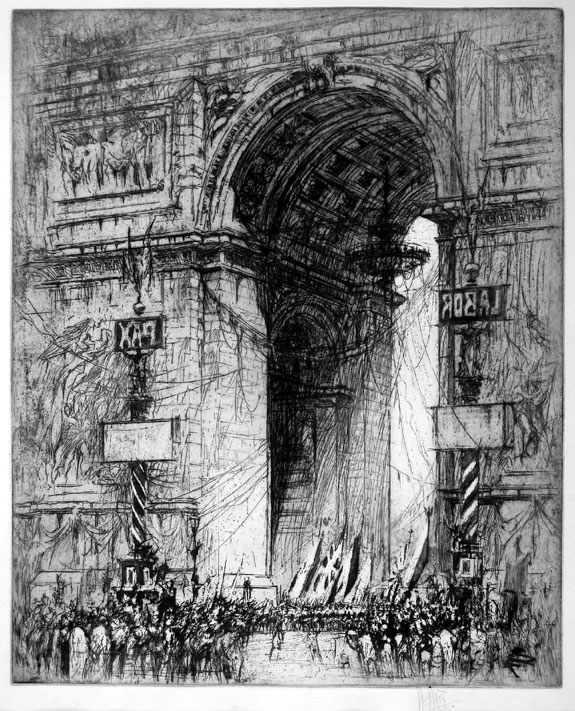|
William
Walcot R.E., Hon.R.I.B.A.
(Odessa
1874 – 1943 Ditchling, Sussex)
L’Arc
de Triomphe, Paris

L’Arc
de Triomphe, Paris
E H-L 57. 556 x 454 mm. Etching and aquatint, a reverse copy of Walcot's watercolour
The Arch of Triumph, exhibited at the Royal Academy in 1917.
Signed
in pencil. Published by H C Dickins 1917. Edition of 65.
A fine impression printed in dark brown ink on stout
cream wove paper. One tiny touched-in pinprick.
£750
|
|
Additional
Information about the Print
Included in Walcot’s 1918 one-man
show at James Connell.
The
second largest triumphal arch in the world, L’Arc
de Triomphe was commissioned to the glory of
the Grande Armée by Napoleon
in 1805, after his victory at Austerlitz. Inspired
by the ancient Roman Arch of Titus, the building
was begun by the architect Jean Chalgrin but due
to the ensuing changing political situation it
was not completed until 1836.
Walcot
concentrates on a close-up detail of the arch
opening, with the two temporary standards lettered
with the Latin words PAX and LABOR (unusually
Walcot has not reversed the subject onto the plate,
so it reads in mirror image of his watercolour), the flags, procession
and crowds, he gives it very much an imperial character
and anticipation of the allied victory to come.
Perhaps he was inspired by a Bastille Day celebration
march in wartime Paris and the morale boost given by the Americans entering the War.
The
Americans declared war on Germany in April and the first troops arrived in France in June 1917.
|